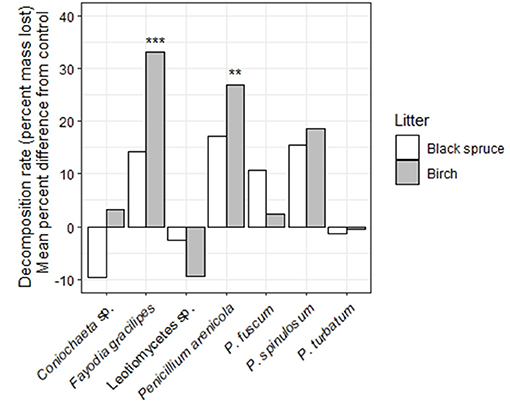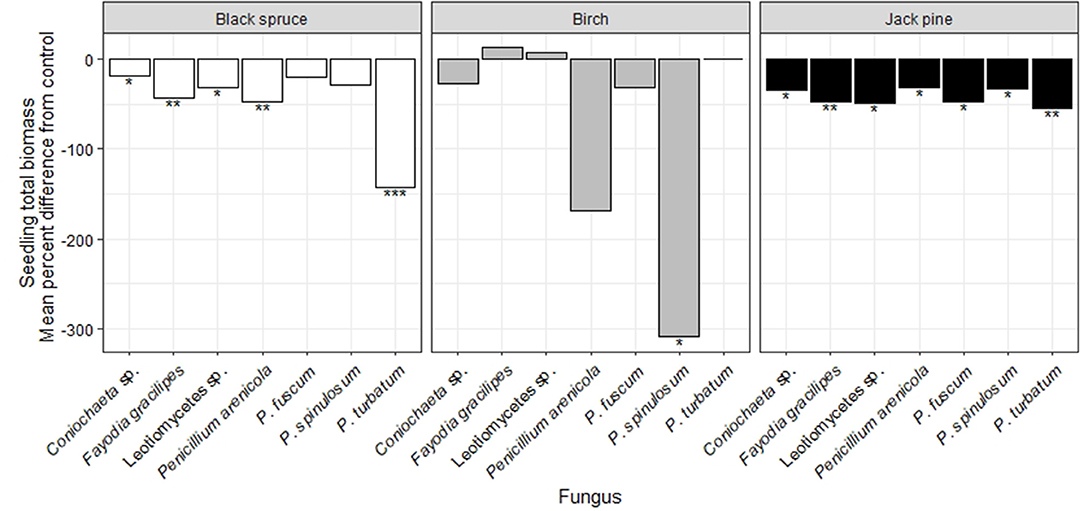- 1Biology Department, Wilfrid Laurier University, Waterloo, ON, Canada
- 2Department of Wood and Forest Sciences, Laval University, Quebec City, QC, Canada
- 3School of Environmental Sciences, University of Guelph, Guelph, ON, Canada
- 4Department of Biology, University of Saskatchewan, Saskatoon, SK, Canada
- 5Institute of Arctic Biology, University of Alaska Fairbanks, Fairbanks, AK, United States
- 6Center for Ecosystem Science and Society, Northern Arizona University, Flagstaff, AZ, United States
- 7Institute of Arctic and Alpine Research, University of Colorado Boulder, Boulder, CO, United States
A Corrigendum on
Identifying Functional Impacts of Heat-Resistant Fungi on Boreal Forest Recovery After Wildfire
by Day, N. J., Cumming, S. G., Dunfield, K. E., Johnstone, J. F., Mack, M. C., Reid, K. A., et al. (2020). Front. For. Glob. Change 3:68. doi: 10.3389/ffgc.2020.00068
In the original article, there was a mistake in Figures 3 and 4 as published. The labels of fungal taxa on the x-axes were incorrect. The corrected Figures 3 and 4 appears below.

Figure 3. Saprotrophic activity of seven heat-resistant fungal taxa, as measured by decomposition rates measured as mass lost of black spruce (white bars) and birch (gray bars) litter over 10 wks incubation in controlled conditions. Results are presented as the mean percent difference for each fungal treatment from the uninoculated control treatment, from 999 bootstrap samples. Values above zero indicate greater decomposition in inoculated samples relative to the control treatment. Asterisks indicate significant effects of inoculation relative to the control treatment based from linear models (**P < 0.01; ***P < 0.001; Table S3).

Figure 4. Effects of seven heat-resistant fungi on seedling total biomass of black spruce (white bars), birch (gray bars), and jack pine (black bars) in growth chamber experiments over 10 wks. Results are presented as the mean percent difference for each fungal treatment from the uninoculated control treatment, based on 999 bootstraps. Values above zero indicate greater biomass when the fungus was inoculated, relative to the control. Asterisks indicate statistically significant differences relative to the control treatment from linear models (*P < 0.05; **P < 0.01; ***P < 0.001; Table S6).
The authors apologize for this error and state that this does not change the scientific conclusions of the article in any way. The original article has been updated.
Publisher's Note
All claims expressed in this article are solely those of the authors and do not necessarily represent those of their affiliated organizations, or those of the publisher, the editors and the reviewers. Any product that may be evaluated in this article, or claim that may be made by its manufacturer, is not guaranteed or endorsed by the publisher.
Keywords: mycorrhiza, saprotroph, taiga plains, boreal, Northwest Territories, seedlings, litter decomposition, extremophile
Citation: Day NJ, Cumming SG, Dunfield KE, Johnstone JF, Mack MC, Reid KA, Turetsky MR, Walker XJ and Baltzer JL (2021) Corrigendum: Identifying Functional Impacts of Heat-Resistant Fungi on Boreal Forest Recovery After Wildfire. Front. For. Glob. Change 4:739486. doi: 10.3389/ffgc.2021.739486
Received: 11 July 2021; Accepted: 29 July 2021;
Published: 18 August 2021.
Edited and reviewed by: Tina Bell, The University of Sydney, Australia
Copyright © 2021 Day, Cumming, Dunfield, Johnstone, Mack, Reid, Turetsky, Walker and Baltzer. This is an open-access article distributed under the terms of the Creative Commons Attribution License (CC BY). The use, distribution or reproduction in other forums is permitted, provided the original author(s) and the copyright owner(s) are credited and that the original publication in this journal is cited, in accordance with accepted academic practice. No use, distribution or reproduction is permitted which does not comply with these terms.
*Correspondence: Nicola J. Day, bmpkYXkuYWNAZ21haWwuY29t
†Present address: Nicola J. Day, School of Science, Auckland University of Technology, Auckland, New Zealand
Kirsten A. Reid, Department of Geography, Memorial University of Newfoundland, St. John's, NL, Canada
 Nicola J. Day
Nicola J. Day Steven G. Cumming
Steven G. Cumming Kari E. Dunfield3
Kari E. Dunfield3 Michelle C. Mack
Michelle C. Mack Kirsten A. Reid
Kirsten A. Reid Jennifer L. Baltzer
Jennifer L. Baltzer